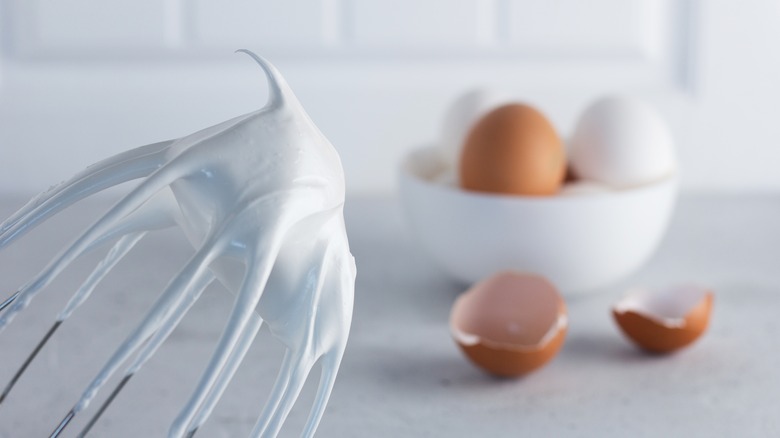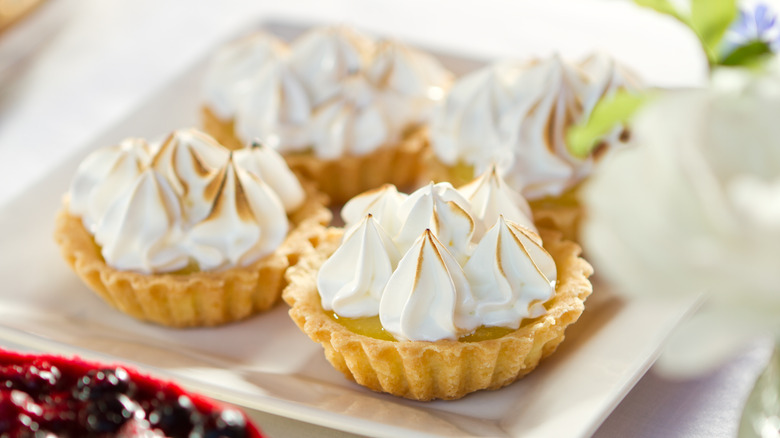What, Exactly, Do Stiff Peaks Mean For Egg Whites?
When it comes to beating egg whites, some recipes call for soft peaks, and some call for stiff peaks. To the novice baker, the difference between the two may not seem important, but in reality, beating egg whites to the wrong type of texture could lead to a dessert disaster.
So, what is the difference between soft peaks and stiff peaks? Once you've started to beat your egg whites, you'll notice that the eggs become foamy and less translucent. If you lift and twist your whisk, the egg whites stuck to it should have a peak-like appearance, but quickly collapse back to a non-peak shape. These are soft peaks.
Stiff peaks, on the other hand, come about later in the whisking process. After further beating of the egg whites, you can again lift and twist your whisk. If the whites hold their rigid shape, they've reached the stiff peaks phase. At this point, you should stop whisking, lest you overmix your egg whites.
Soft peaks vs. stiff peaks – it really does matter
As mentioned previously, the type of dessert you're making will affect the type of peaks you want in your egg whites. For instance, if you're just looking to add some fluffiness to pancakes or waffles, you'll want to create soft peaks. Egg whites beaten to soft peaks are also great for use in whipped cream and mousse because they're airy but not too firm.
That being said, egg whites beaten to stiff peaks are ideal for certain other desserts, like souffles and meringue. For example, air is extremely important in souffles, so the airier stiff peaks work better. If you were to use soft peaks, the souffle wouldn't be able to rise as much. Similarly, you should create stiff peaks for meringue, as the whites holding their shape are essential to keeping a Baked Alaska from melting. What's more, using stiff peak egg whites in a meringue recipe is what allows the meringue to be baked into cookies.
Of course, at the end of the day, whether you whip egg whites to soft peaks or stiff peaks, they'll still taste the same. However, the texture or structural integrity of your dessert could be affected in an unfavorable way.

